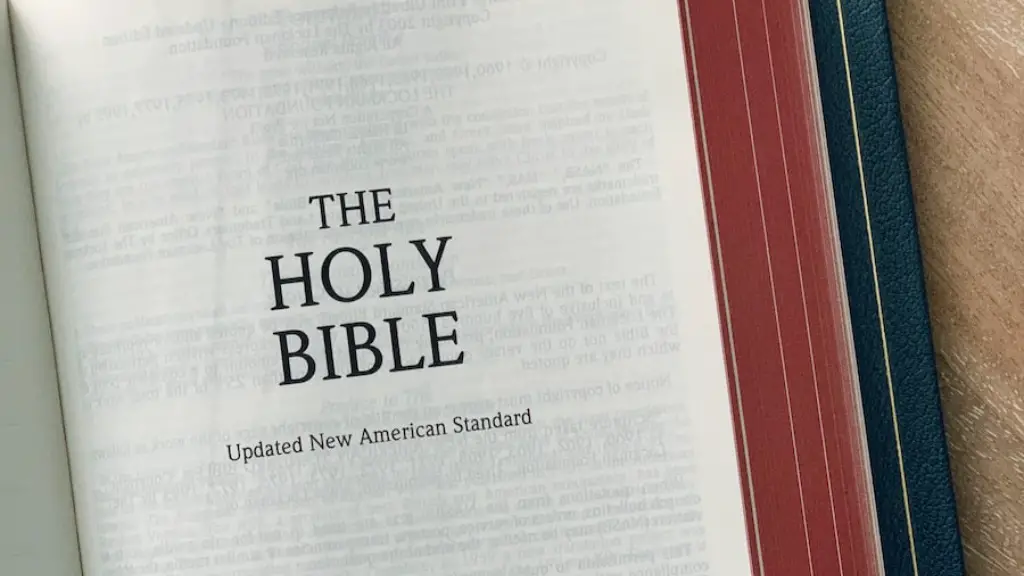Introduction to Prophets in the Bible
The Bible is full of prophetic figures and stories of the past, present, and future. Throughout the text, biblical prophets provide a voice to the voiceless and warn against evil, offering guidance and comfort in times of despair. Prophets are messengers sent by God, often appearing at moments of great alarm and turmoil. In times of darkness and conflict, a prophetic voice is believed to be the only thing that can bring solace and hope in times of hardship and despair.
Examples of Prophets in the Bible
Some of the most well-known prophets in the Bible are Elijah, Isaiah, and Jeremiah. Each of these prophets serves a distinct purpose in the narrative of the text, carrying the message of God’s will and the consequences of disobeying it. Elijah is known as the only prophet to have ascended to Heaven without having died or been taken. He was sent to warn the people of Israel against their unrighteous practices and remind them of their covenant with God. Isaiah was a prophet in the 8th century BC that was sent to warn of the consequences of idolatry, pagan worship, and spiritual immorality, and to offer hope of restoration. Lastly, Jeremiah was a prophet in the 6th century BC sent to warn the inhabitants of Jerusalem of impending destruction unless they repented and turned away from idolatry and immorality. He is notably the longest-lived prophet in the Bible and his ministry is often used to illustrate the mercy and patience of God.
Other Notable Prophets
In addition to the three aforementioned Biblical prophets, there are a number of other noteworthy figures and stories that are integral to understanding the Bible’s prophetic voice. Moses, the Israelite leader of the Exodus, acts as a prophetic figure in the narrative, conveying God’s will and speaking against oppression and slavery. Jonah, who was famously swallowed by a great fish, warned the people of Nineveh of their impending destruction unless they repented and turned from their wickedness. Finally, Hosea, a prophet in the 8th century BC, which is believed to be the same time period as Elijah, carried a similar message of hope and warning. He is also a notable figure in the narrative of the Bible, using his prophetic words to remind them of the consequences of their unfaithful practices.
Gender Roles, Power Structures, and Misogyny in Relation to Prophets
When reading and understanding the role of prophets in the Bible, it is necessary to take into account the patriarchal power structure of the time. Although there are a few female prophets in the text, such as Deborah, Huldah, and Miriam, most prophetic figures in the Bible are men. This patriarchal structure is seen in other aspects of the text as well, often making references to men’s superiority to women. This attitude has been worsened throughout the years due to traditional religious interpretations, reinforcing unfavorable views of women and a sense of their inferiority to men.
Modern Understanding and Interpretation of Prophets
In modern times, biblical prophets are interpreted in a wide variety of ways. Some believe that the Bible is the true word of God, and that the prophecies written therein are his messages to be taken literally. Others view the prophetic passages as a metaphor, urging us to be vigilant and exercise piety in our lives. Likewise, some are skeptics and do not believe in the teachings of the Bible, while still others are agnostic and see the prophetic stories as an interesting and meaningful reflection of the time.
Interpretations through Art and Culture
The stories of biblical prophets have been used in art and culture for centuries. Through novels, plays, television, and movies, these prophetic stories have been retold and reimagined by modern society. In recent times, many of these popular interpretations of biblical figures have sought to spread a sense of understanding and tolerance. Many have additionally used art as a platform to deconstruct the patriarchal power structure of previous biblical times, empowering women and minorities where they were once disregarded.
Conclusion
Despite the different interpretations of prophets in the Bible, there is a common theme among them: hope and warning. Prophets were said to be “messengers of truth”, warning the people of impending destruction and doom if they disobeyed God’s commands. Through religious tradition and modern art, these stories still remain relevant today, spreading a message of understanding and tolerance.

